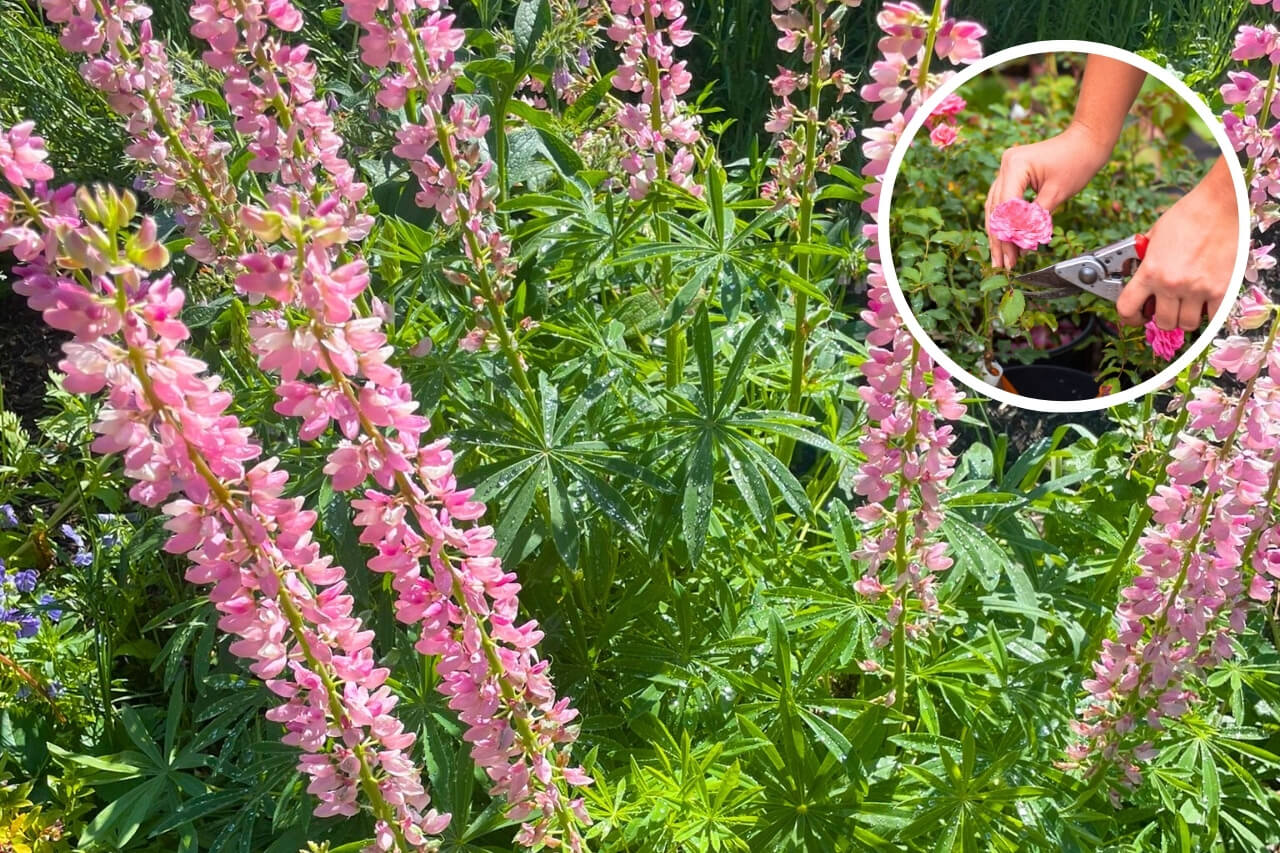Until a few years ago, I believed flowering plants shouldn’t be touched. I loved seeing their colors in the garden and did everything I could to make the blooms last longer.
Several years later, and with much more experience, I found that there are some plants that can actually bloom a second time and that reflowering is not a legend but it really exists.
Why and how does this work? Well, once a flower starts to fade, the plant normally begins focusing on making seeds, which stops it from producing new flowers.
But if you snip off the spent blooms, the plant often “tries again” and puts its energy into new buds and blooms instead.
It doesn’t happen with all plants, and you have to be very careful with the timing, which is why I’ve selected 10 on which it works quite easily.
1. Roses
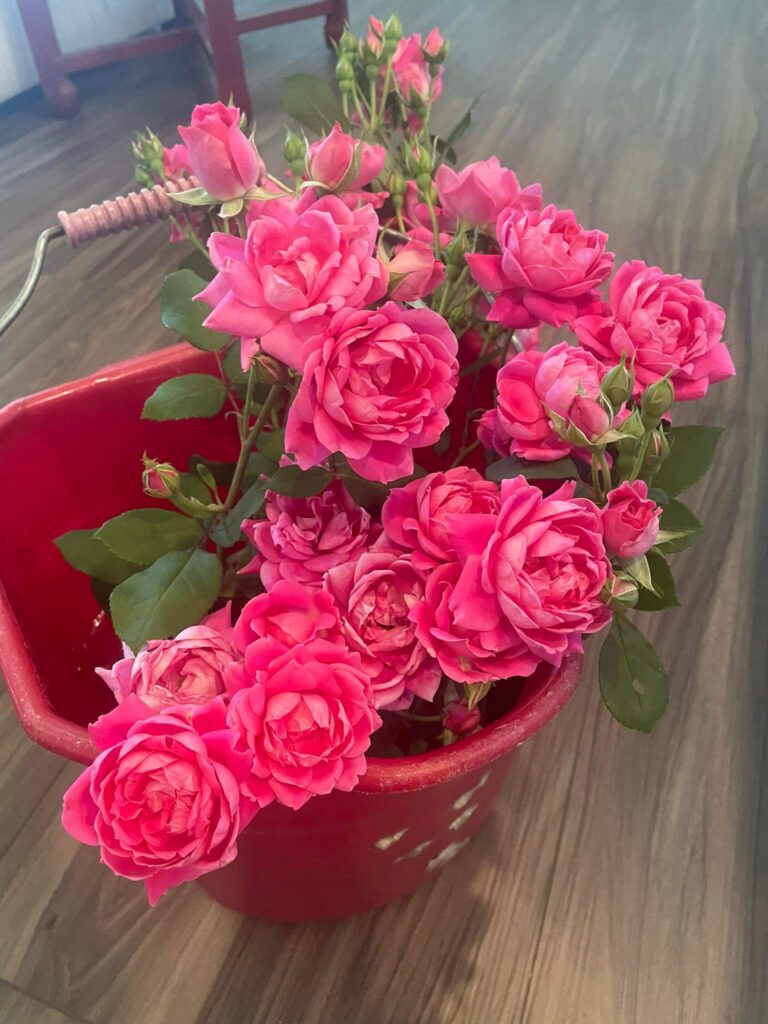
Many modern roses (especially repeat-blooming varieties) will keep flowering throughout the summer if you remove their faded flowers.
I’ve also noticed that you can find specific repeat-blooming varieties on the market that prevent the plant from forming rose hips and keep it continuing to produce new rose buds.
In general, Roses want to make seeds, so if you take away the finished flower, the plant often responds by blooming again.
Just look carefully at the rose. As soon as a blossom wilts or the petals start to drop, cut it off.
As usual, use clean pruners or scissors to snip the flower stem just above a leaf or bud.
2. Cosmos
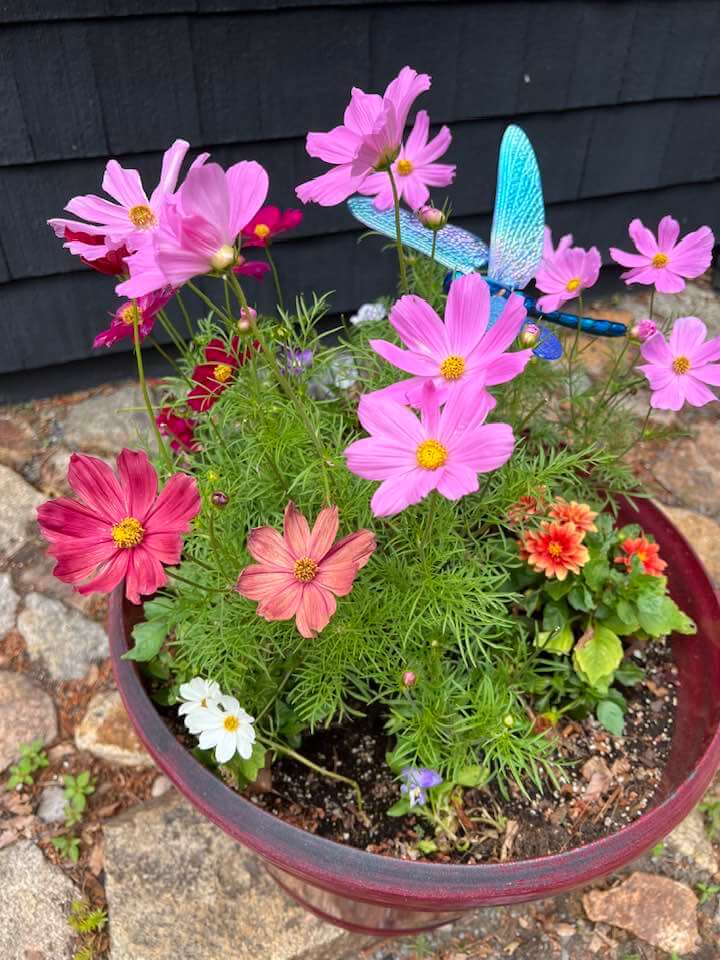
Cosmos are annual flowers and can really bloom all summer long if they are regularly deadheaded.
After a cosmos flower finishes blooming, the plant will form seeds unless we remove the spent bloom. By cutting off the faded flowers with part of the stem, we signal the cosmos to keep blooming instead of setting seed.
This “cut-and-come-again” nature is why cosmos are favorites in cutting gardens. The more you cut the flowers, the more blooms the plant will produce.
So whenever you see a flower that has withered or dried up, take garden scissors and cut the flower stem back to the first set of leaves below the spent flower.
3. Lavender
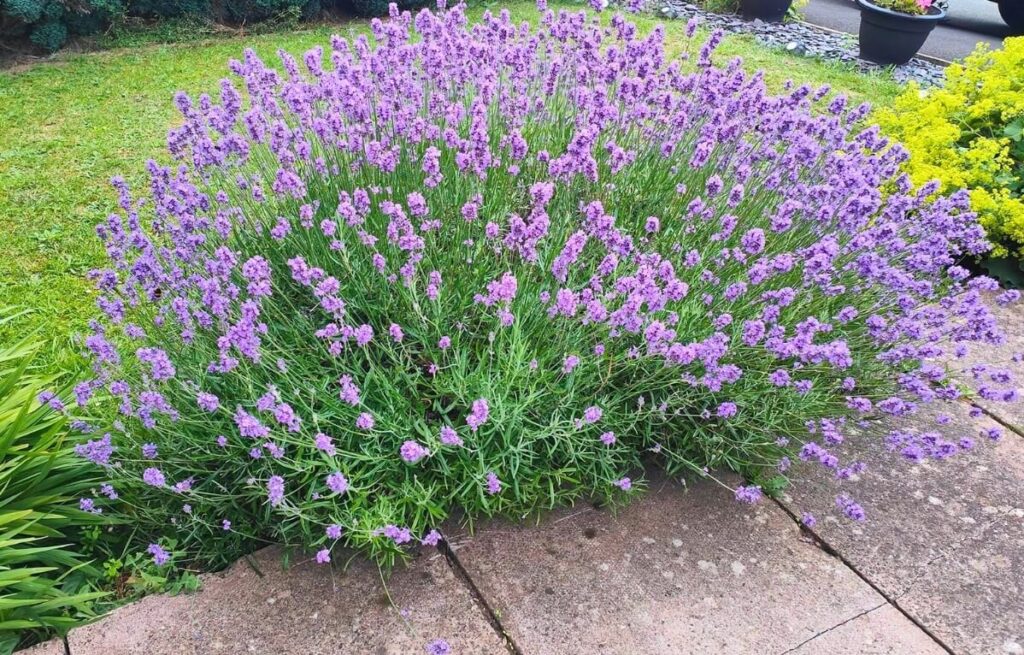
If you have been following me for a while, you know how much I love lavender and that I use it for a thousand things, from oils to soaps.
A nice thing about lavender is that if you trim off the spent flowers at the right time, the plant can often produce a second wave of blooms later in the season.
Is not hard to get the timing right. The first round of lavender flowers will start to fade and turn brown (usually by mid-summer), so take a pair of sharp shears and cut back the flower stems.
Be careful not to cut into the woody, brown part of the stems, you just have to remove the soft, flower-bearing stems.
In addition, remember to have a look at my secrets for growing outstanding lavender.
4. Petunias
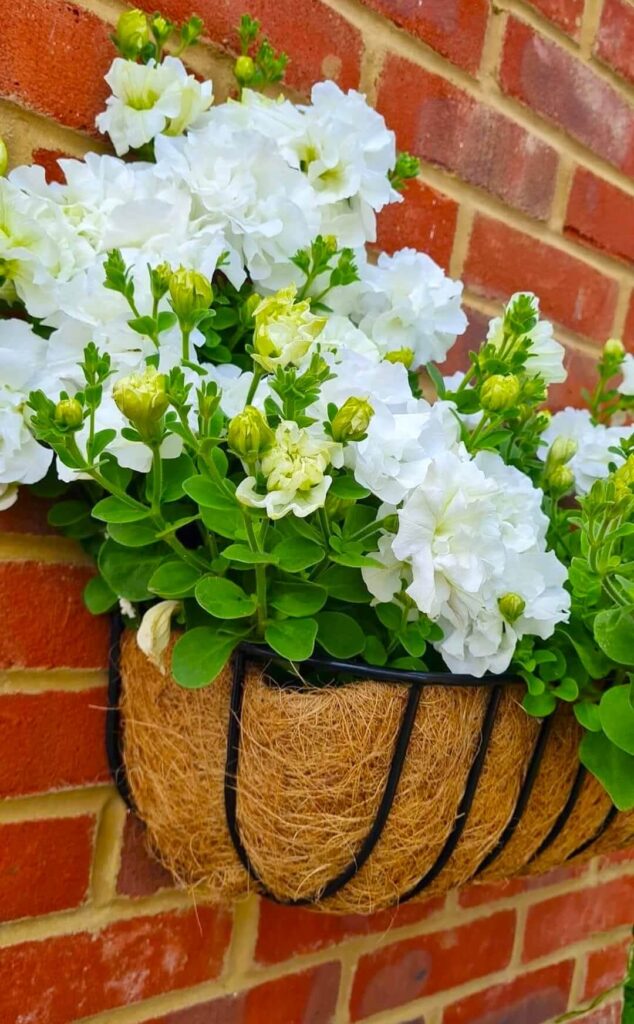
Petunias are quite popular in beds and hanging baskets because they can bloom from late spring to autumn.
However, they can get leggy and slow down flowering if old blossoms stay on.
When you remove the faded petunia flowers, the plant doesn’t waste energy on making seeds and it channels its energy into growing new branches and fresh flowers, resulting in a bushier plant with more blooms.
Deadhead petunias during their flowering season which runs from late spring through summer.
Every few days, inspect your petunias and pinch off any wilted or dried flowers. It’s best to remove not just the petals but also the small green seed pod behind the flower.
5. Delphiniums
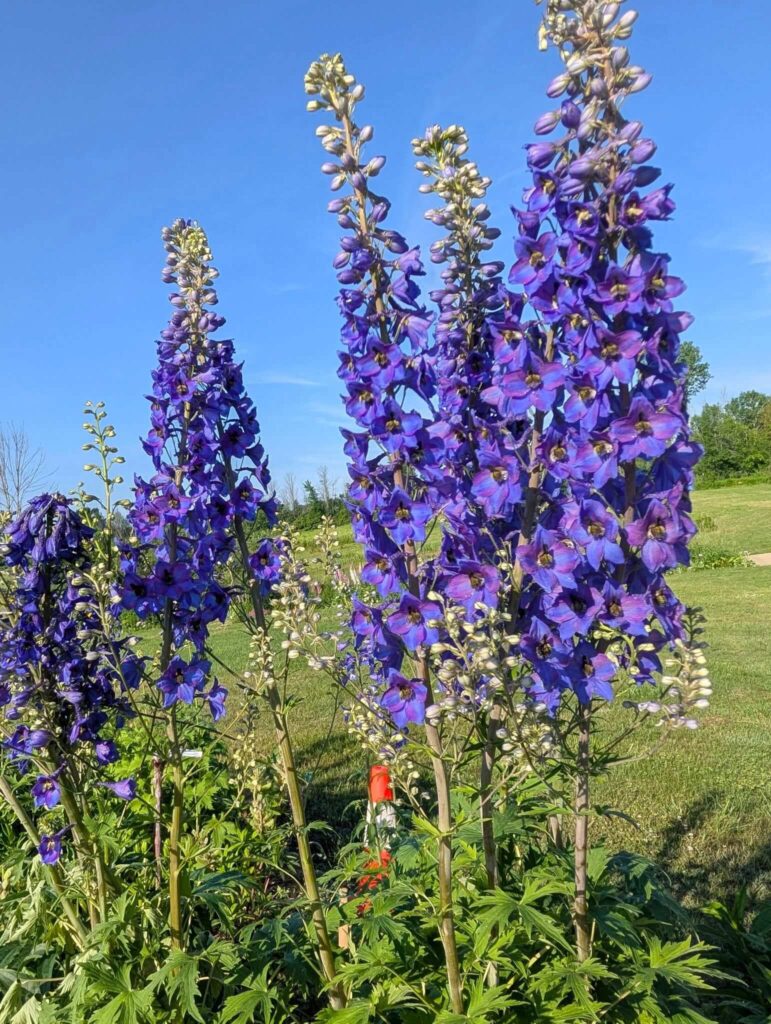
I love the tall spikes of Delphinium flowers that bloom in early summer.
Many gardeners don’t realize that delphiniums can bloom a second time in late summer if they just remove the spikes once the first bloom stalk has finished.
Delphiniums usually produce additional flower spikes even though they are smaller than the first ones.
You should cut delphinium stalks right after the first bloom fades near the base of the plant, just above a pair of leaves or new shoots. By doing this in July (or whenever the first flowering ends) you give the delphinium time to grow new shoots that can bloom again in late summer.
PRO GARDENER: Don’t forget to provide a little fertilizer and enough water after cutting back. They will fuel the rebloom.
6. Marigolds

I like Marigolds because they can bloom repeatedly for months as long as you keep removing the old blooms.
Each marigold flower, once finished, starts to develop seeds. If that seedhead isn’t removed, the plant gets the signal that it’s done flowering.
But, as we have already seen, if you deadhead every faded marigold, you encourage the plant to keep producing new flower buds instead of seeds.
Remember to also remove the green base where seeds form.
7. Salvia (Perennial Sage)
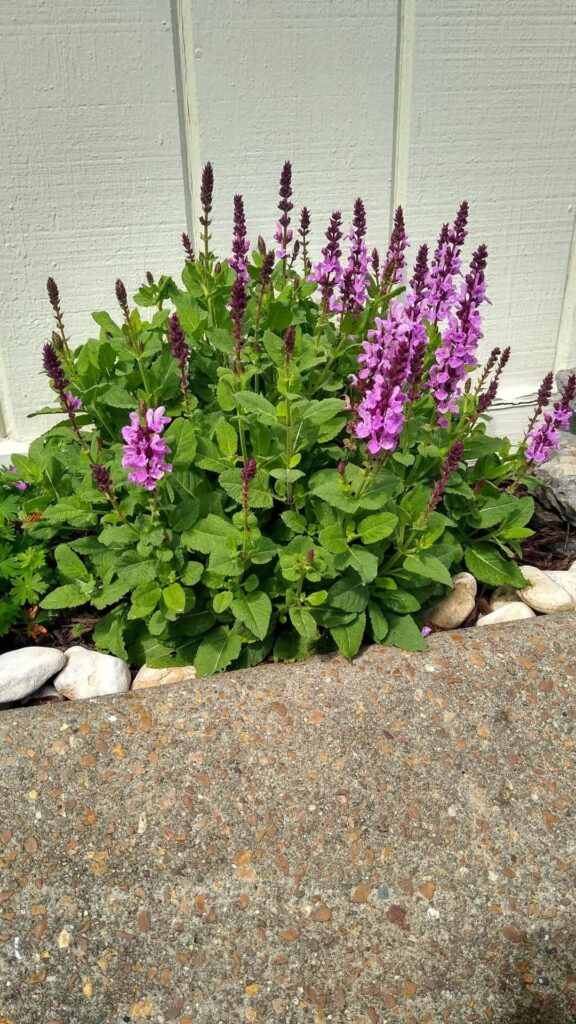
Many perennial salvia varieties (such as Salvia nemorosa, commonly grown in gardens) have a long initial bloom period in late spring to early summer.
They also have a great trait: if you cut off the old flower spikes, the plant often sends up new ones for a second bloom.
Deadheading salvia not only increases the number of flower spikes, but it can also keep the plant more compact.
In fact, taller salvias tend to flop over after blooming, so cutting them back helps maintain a nicer shape and triggers fresh flowering on shorter stems.
Just be careful with this plant. Don’t wait for the entire spike to dry out.
As soon as about one-third of the spike has withered, use pruners to cut the flower stem back.
8. Daylilies
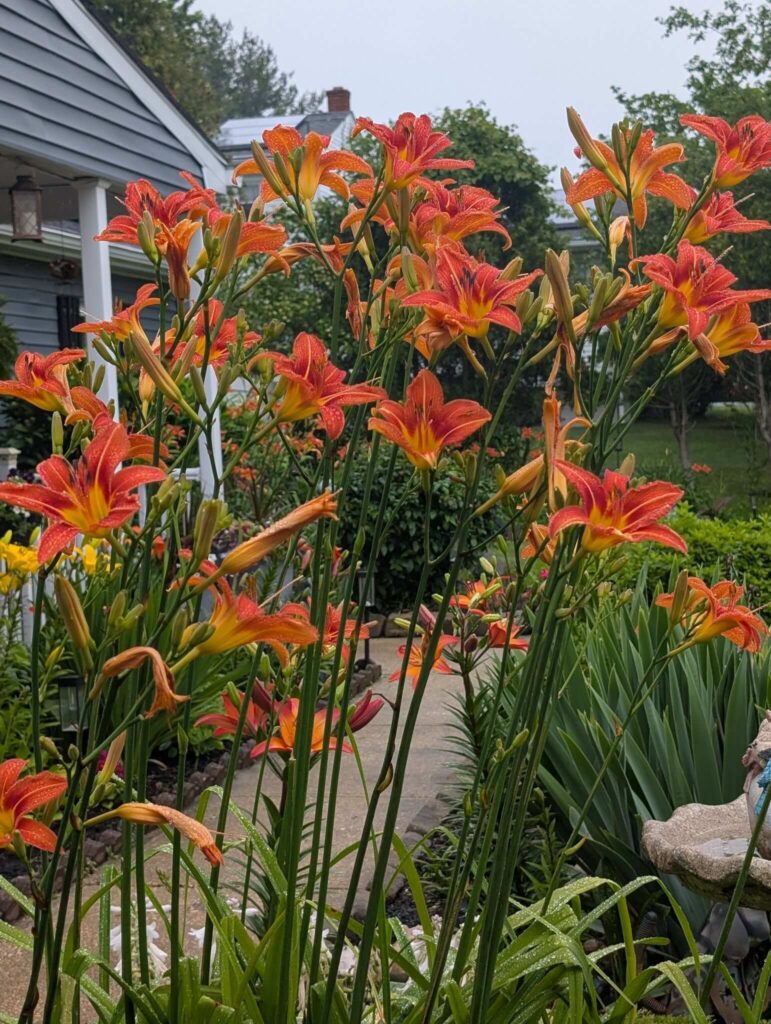
As you probably know, Daylilies are perennial flowers that typically bloom in early to mid-summer.
Many newer daylily varieties are rebloomers and can produce a second round of flowers later in the season if conditions are right.
Even for those that bloom once, deadheading can help maximize their bloom period. Each daylily flower only lasts one day (hence the name), and after it fades, the plant can either form seed pods or redirect energy to making more blooms.
By snipping off the spent flowers, you prevent seed development and encourage the plant to keep blooming as long as possible.
Daylilies are also perfect if you have little time to take care of your garden. I included them in the list of hardy plants that grow even in harsh conditions.
9. Lupins (Lupines)
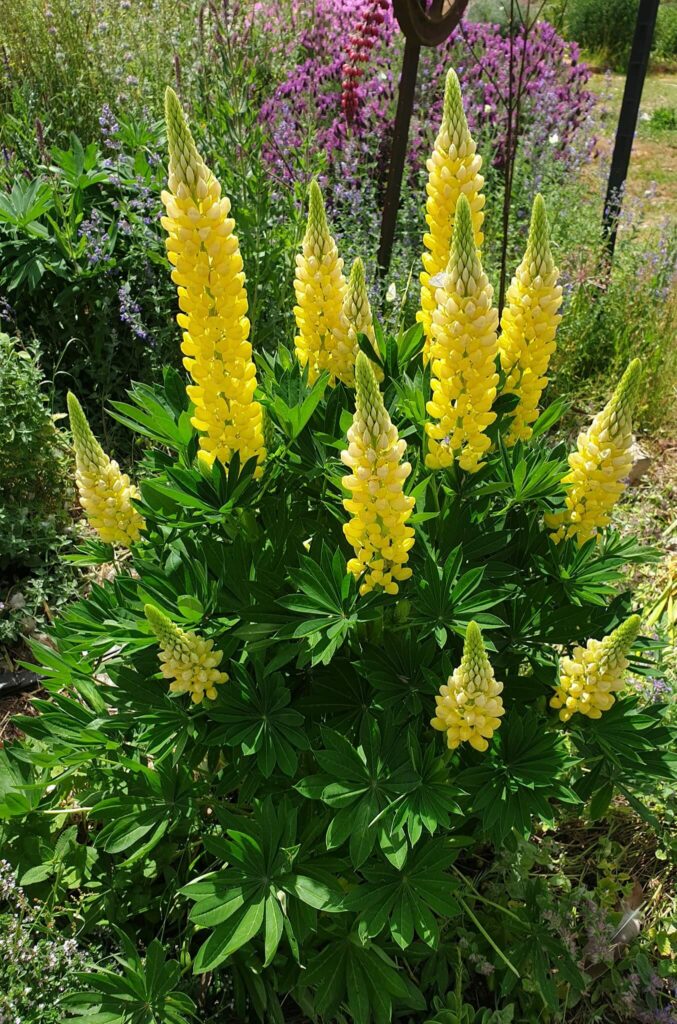
Lupins are those spiky flowering perennials that bloom in late spring to early summer.
They often put on a big show of color and then start forming seed pods when the flowers fade.
As usual, cutting off the spent flower spikes can prompt some lupins to produce a second, smaller set of blooms later in the summer.
Watch for when the lupin’s flower spike starts to wilt and lose its color. This usually happens a few weeks after the first bloom opens.
Remember to cut the entire flower stalk off, low and near the base of the plant or just above the first set of healthy leaves on that stem.
10. Pelargoniums (Annual Geraniums)
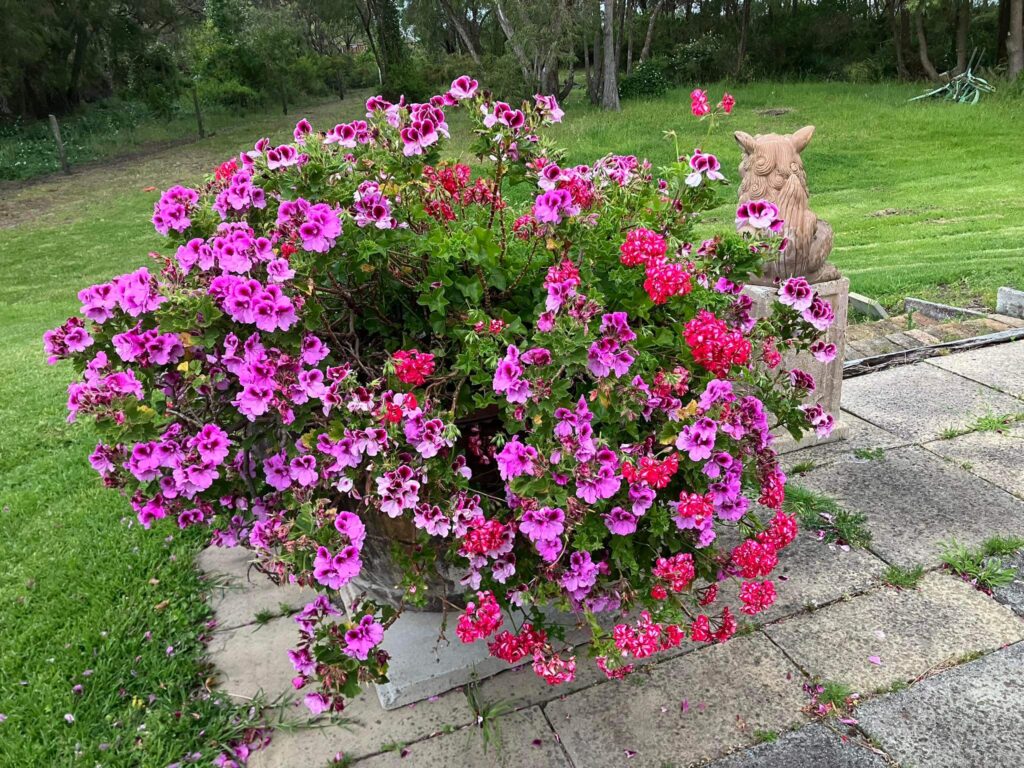
Pelargoniums, commonly called annual geraniums, are classic container and bedding plants that bloom over a very long season.
These plants want to keep flowering, but it’s important to remove the old blossoms.
Regular deadheading ensures that the plant doesn’t waste energy on spent blooms or seed formation.
In fact, if you consistently take off the faded flowers, pelargoniums will continuously produce fresh flower clusters for months.
Also, take a look at the list of perennials that naturally outcompete weeds.

